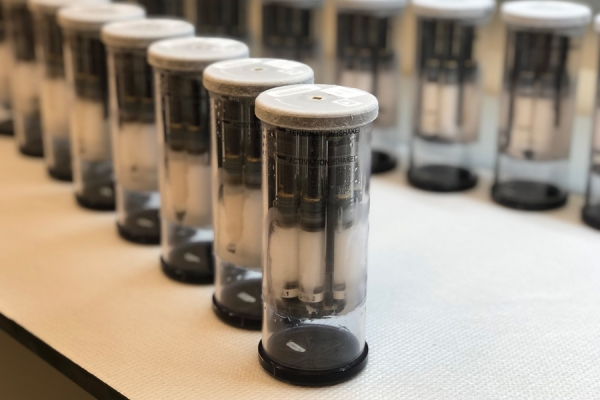After exposure in space aboard the International Space Station, a new kind of surface treatment significantly reduced the growth of biofilms, scientists report. Biofilms are mats of microbial or fungal growth that can clog hoses or filters in water processing systems, or potentially cause illness in people.
In the experiment, researchers investigated a variety of surfaces treated in different ways and exposed to a bacteria called Pseudomonas aeruginosa, which is an opportunistic pathogen than can cause infections in humans, especially in hospitals. The surfaces were incubated for three days aboard the space station, starting in 2019. The results show that textured surfaces impregnated with a lubricant were highly successful at preventing biofilm growth during their long exposure in space. The findings are described in a paper in the journal Nature Microgravity, by Samantha McBride PhD ’20 and Kripa Varanasi of MIT, Pamela Flores and Luis Zea at the University of Colorado, and Jonathan Galakza at NASA Ames Research Center.
Clogs in water recovery system hoses aboard the ISS have been so severe at times, the hoses had to be sent back to Earth for cleaning and refurbishing. And while it isn’t known whether biofilms have directly contributed to astronaut illnesses, on Earth, biofilms are associated with 65 percent of microbial infections, and 80 percent of chronic infections, the researchers say.
One approach to preventing biofilms is to use surfaces coated with certain metals or oxides that kill microbes, but this approach can fail when a layer of dead microbes builds up on the surface and allows biofilm to form above it. But this was not the case with the liquid-infused surface that performed well in the ISS experiments: Rather than killing the microbes, it prevented them from adhering to the surface in the first place.
Read more at Massachusetts Institute of Technology
Image Caption: Inside these vials are chambers containing the new surface material and the microbes. They were launched in stasis to ISS to avoid bacterial growth before reaching microgravity conditions. Once in ISS, the astronauts activated the samples by combining the various chambers in the vials. Credits: Space Biofilm Program


